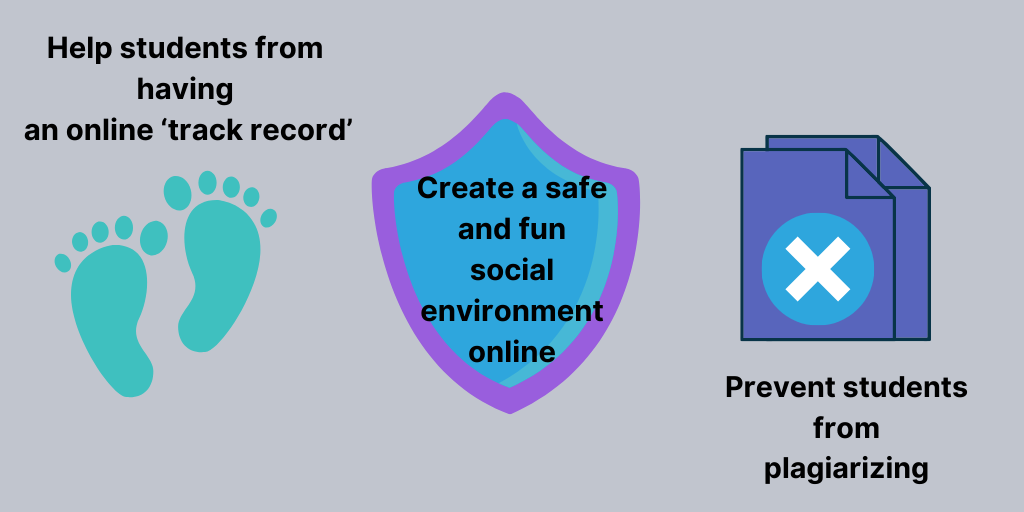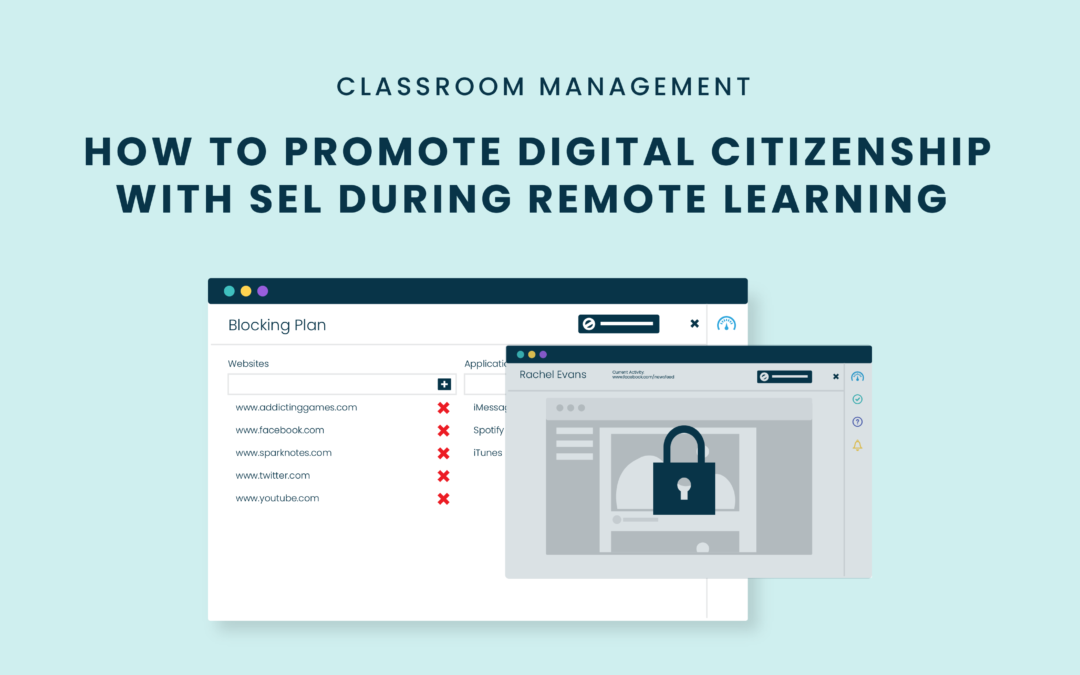Teaching good digital citizenship during remote learning is a big priority for many teachers this school year. With many classes being taught remotely or in a hybrid environment, teachers have an even bigger responsibility to teach and promote good digital citizenship in as many ways as possible while virtual.
Many schools and teachers have adapted new learning styles into their classrooms following COVID-19, we recently sat down with Sean Coffron, Instructional Technology Training Specialist, to find out how to promote digital citizenship with SEL during remote learning.
What is SEL?
As CFC describes it, “Social-emotional learning (SEL) is the process of developing the self-awareness, self-control, and interpersonal skills that are vital for school, work, and life success.” SEL has a lot of advantages to it including, interpersonal skills, problem-solving skills, effective collaboration, and effective communication generally and emotionally.
This style of instruction focuses on the needs of the student much more than the actual material. While learning is still a number one priority SEL teaches young students how to manage learning with their emotions as well as showing them how to use these skills outside of the classroom.
SEL understands that every student is different, whether in stages of learning or their home situation. CFC states, “People with strong social-emotional skills are better able to cope with everyday challenges and benefit academically, professionally, and socially.”
What is Digital Citizenship?
TechTarget defines digital citizenship as, “the responsible use of technology and etiquette pertaining to an online presence. This includes behaviors and responses to others within a digital community in which one is a member.” Digital citizenship is a dense concept that involves every action out there on the internet. Every person on the internet leaves behind a digital footprint which is essentially the traced action of everything you have ever posted, liked, commented, or searched on the internet.
Now that most students are somewhat virtually learning, the exposure for students to learn the impact they make on the internet is extremely important. Teachers need to be relaying this information to their students and setting the example themselves to continue to promote good digital citizenship in and out of the classroom.
How to Promote Digital Citizenship with SEL during Remote Learning
Sean explains how he has noticed that a lot of teachers have found new ways to reach students and find new learning spaces for their students. This is exciting because teachers are not only actively bettering their professional development but also providing better learning opportunities for students while virtual. Sean states that the classroom environment is very different from a remote one. Because students have access to different resources during class now that they are remote, so digital citizenship has found a bigger role in the classroom recently.
Students now have different ways that they can become disengaged with materials. With SEL teachers have to be able to provide additional or different structures to help students stay engaged with the lesson. Sean explained that at his school one thing they talk about is being mindful of student’s emotional growth. They have been developing mindfulness activities into lessons that help to enhance relationships and engagement with the material in the process of learning.
Sean also explains that discipline looks very different now that students are in their homes rather than in school. The responsiveness to student difficulties has to be addressed with a bit more care. They have started to explore how they achieve better support for students from an instructional perspective and a class management perspective.

Digital citizenship is a growing concern for teachers and needs to be addressed to create a positive online atmosphere. Sean urges teachers to focus where advocacy is not a strong point for those students who are being cyberbullied and those who haven’t had the opportunity to step forward. Create new ways for these students to reach out to their counselors and their teachers to get help with these social problems if they need it. SEL and digital citizenship go hand in hand in creating a healthy online and in-person relationship for your students.
Listen to the full conversation with Sean Coffron on our Tackling Tech Podcast!
On this episode of Tackling Tech Podcast, powered by Dyknow, Brett McGrath invites back Sean Coffron, Instructional Technology Training Specialist, back to talk about digital citizenship, classroom management, and closing the digital divide. Sean shares his predictions about the upcoming school year and the future of digital education.
Start teaching confidently with Dyknow for free!
Latest blog articles

Dyknow 2021 Year In Review
In addition to web browser updates and bug fixes, Dyknow released several major product updates, new features and enhancements. Check out Dyknow’s 2021 Year in Review!

The Classroom Management Tool that’s Rated #1 in Satisfaction on G2
K-12 Administrators across the world trust G2 as the #1 platform to find, research, and choose EdTech tools that solve the most pressing problems their teachers are experiencing. In G2's Fall 2021 Reports, Dyknow was once again rated #1 in overall Satisfaction out of...

Bringing Diversity and EdTech to the English Classroom
On this episode of Tackling Tech, Tierra Leustig interviews Scott Bayer about being an anti-racist teacher, diversifying reading lists, creating inclusive learning environments, and leveraging ed-tech in non-technical ELA classrooms. Scott Bayer is a High School...

